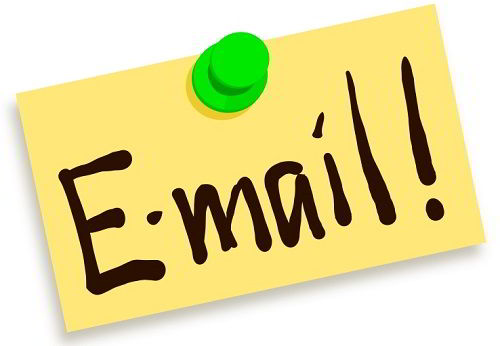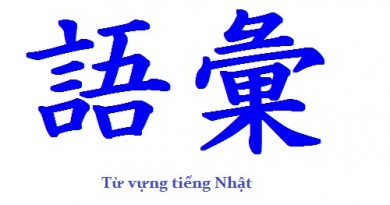How to write an email in Japanese
How to write an email in Japanese. If you’re working for a Japanese company, or in a company where Japanese is being used, you probably have to write emails in Japanese, hence the need to know how to write an email in Japanese. This is a chance for you to make use of your honorific arsenal. In this article, Learn Japanese daily will introduce to you how to write an email in Japanese in a proper way.
Contents
- 1 Japanese email format – Japanese email template
- 1.1 宛名 (atena : receiver)
- 1.2 挨拶 (aisatsu : greetings) – Japanese email greeting
- 1.3 名乗り (nanori : addressing yourself)
- 1.4 要旨 (youshi : main body content)
- 1.5 詳細 (shousai : Details)
- 1.6 結びの挨拶 (musubi no aisatsu : Closing remarks) – Japanese email closing phrases
- 1.7 署名 (shomei : name, signature)
- 1.8 Japanese email examples
Japanese email format – Japanese email template
A proper email in Japanese consists of seven parts : 宛名 (atena : receiver)、挨拶 (aisatsu : greetings)、名乗り (nanori : addressing yourself)、要旨 (youshi : main body content)、詳細 (shousai : details)、結びの挨拶 (musubi no aisatsu : closing remarks)、署名 (shomei : name, signature). In case both parties are already close, you can leave out certain parts, however, the email be become less formal.
宛名 (atena : receiver)
Written right in the first line of the email.
ABC 株式会社 – Name of the company or organization, the form of the company shouldn’t be left out: limited, join stock.
代表取締役 – Position, skip this if it’s just an ordinary staff.
平野友朗様 – Fullname + 様 will make a better impression. However sometimes it’s ok to not write the fullname but only Lastname + 様.
When both parties are rather close, we can leave out the name of the company (organization) and the position. It’s ok to just write the fullname or Lastname + 様. When both parties are already really close and want to be more casual, replace 様 with さま.
挨拶 (aisatsu : greetings) – Japanese email greeting
This is how to start an email in japanese.
For example :
ご無沙汰しております。It’s been a long time.
先日は、ありがとうございました。Thank you for yesterday.
早速のご連絡ありがとうございます。 Thank you for contacting soon. We can understand this sentence as : thank you for your email in japanese
In case of contacting outside of the company, some frequently used phrases are: お世話になっております – Thanks for always helping me, or even more formal: いつも大変お世話になっております – Thank you for always supporting me. In case that’s the first time making contact, instead of using the two above phrases, we should use: おせわになります. I hope for the kind assistance hereafter. In internal cases, the frequently used phrase is: お疲れ様です – You have been hard-working lately.
名乗り (nanori : addressing yourself)
Next, write the name of the company (organization), position and your name, just like the receiver’s section (of course we don’t use 様 for yourself). You can use the structure: Position ~をしております、fullname と申します. Some people think the name of the sender is already displayed on the email, however not every web browser will display your name right, or when you read your email on your phone, the sender’s information may not be displayed. Therefore, you should address yourself so the other person can catch a glympse of who they are exchanging emails with.
要旨 (youshi : main body content)
When you are done greeting and addressing yourself. It’s time to move on to the main body content of the email. In this section, mention the main ideas of the email so the receiver can get an idea of it. Some phrases might be:
打ち合わせの日程について、ご相談いたします。 I’d like to discuss about the meeting schedule.
先日のお礼を申し上げたく、メールをお送りしました。I’d like to show my gratitude to you about the other day.
… についてお詫びを申し上げたく、ご連絡いたしました。I’d like to apologize about…
お見積内容のご確認のために、ご連絡いたしました。I’d like to confirm the bidding information.
In case you need an answer, you can use such phrases:
「お手数ですが、ご確認よろしくお願いいたします」 Excuse me, but could you please confirm…
「お返事をお待ちしております」 I’m looking forward to your feedback.
詳細 (shousai : Details)
In this section, explain to the other person what you wish to convey, what you want them to do for you. The most important thing is to explain clearly, the used words shouldn’t be too complicated. Using honorifics is important, however, if you are not too good at honorifics, use the formal form (ます) to prioritize the content you want to convey.
In this article, you can organize the content in a list, or use bullet points… to make the content more clearly. For example:
内容 ビジネスメールコミュニケーション講座
日時 2015年2月20日(金)
場所 株式会社アイ・コミュニケーション
対象 新入社員もしくは研修担当者
参加費 8,640円(税込)
結びの挨拶 (musubi no aisatsu : Closing remarks) – Japanese email closing phrases
After you have done stating the main body content, use some closings to wrap it up, for example:
今後ともよろしくお願いいたします。I hope to receive your assistance hereafter.
ご検討の程、よろしくお願いいたします。I really hope you can consider.
引き続きよろしくお願いいたします。I really hope you continue (the job).
ご協力いただけますよう、よろしくお願いいたします. I really hope you will give me your cooperatioin.
署名 (shomei : name, signature)
You can write your name or insert your electronic signature to wrap it up:
会社名 name of the company、部署名 position.
名前 name (if the name is hard to pronounce, there should be a pronunciation).
郵便番号、住所、ビル・建物名 (address)
電話番号 (telephone number)
ファクス番号 (Fax number)
メールアドレス (email)
URL(ウェブサイト名も記載)the company’s website.
These above information will help your partner contact you more conveniently, especially for emergencies.
Japanese email examples
Let’s see some samples of email in Japanese to understand more how to write an email in japanese
○○ Company name
◇◇◇◇様 Mr/Mis
いつもお世話になっております。Thanks for your helps (thanks for always help me)
△△の○○です。 I am … from … (company name)
私ごとではありますが、○月○日(○曜)に
▽▽へ転勤することになりました。 From day … month… i transfer to … (other department or branch)
◇◇様には、新入社員として初めてご挨拶したときから
温かくご指導いただき、大変お世話になりました。From you, I received many helps/advices… from the first days of working. I really thanks for your helps
本来であれば伺って直接ご挨拶するべきところですが
急な辞令のため、メールにて失礼いたします。 Normally i have to visit and say thanks to you directly. But i have to move suddently, i must say thanks by email.
なお、後任は以前ご挨拶した
○○ が担当させていただくことになりました。 The next one who will continue my current job is … who you met before.
引き続き、よろしくお願いいたします。 We hope to continue receiving your helps
<○/○(○)以降の連絡先> My address from now on
company name
〒 111-1111 Zip code
Address
Tel, Fax
※メールアドレスは変わりません Email address does not change
—————————————————-
signature :
△△ Comany name
◎◎部 Department
○○ Name
住所:〒111-1111 Adress
TEL: FAX:
URL:https://tuhoconline.net
Mail:○○@tuhoconline.net
—————————————————-
Above are seven main parts of an email in Japanese and how to write an email in Japanese. Hopefully this article will help you be able to write your a work email on your own.



